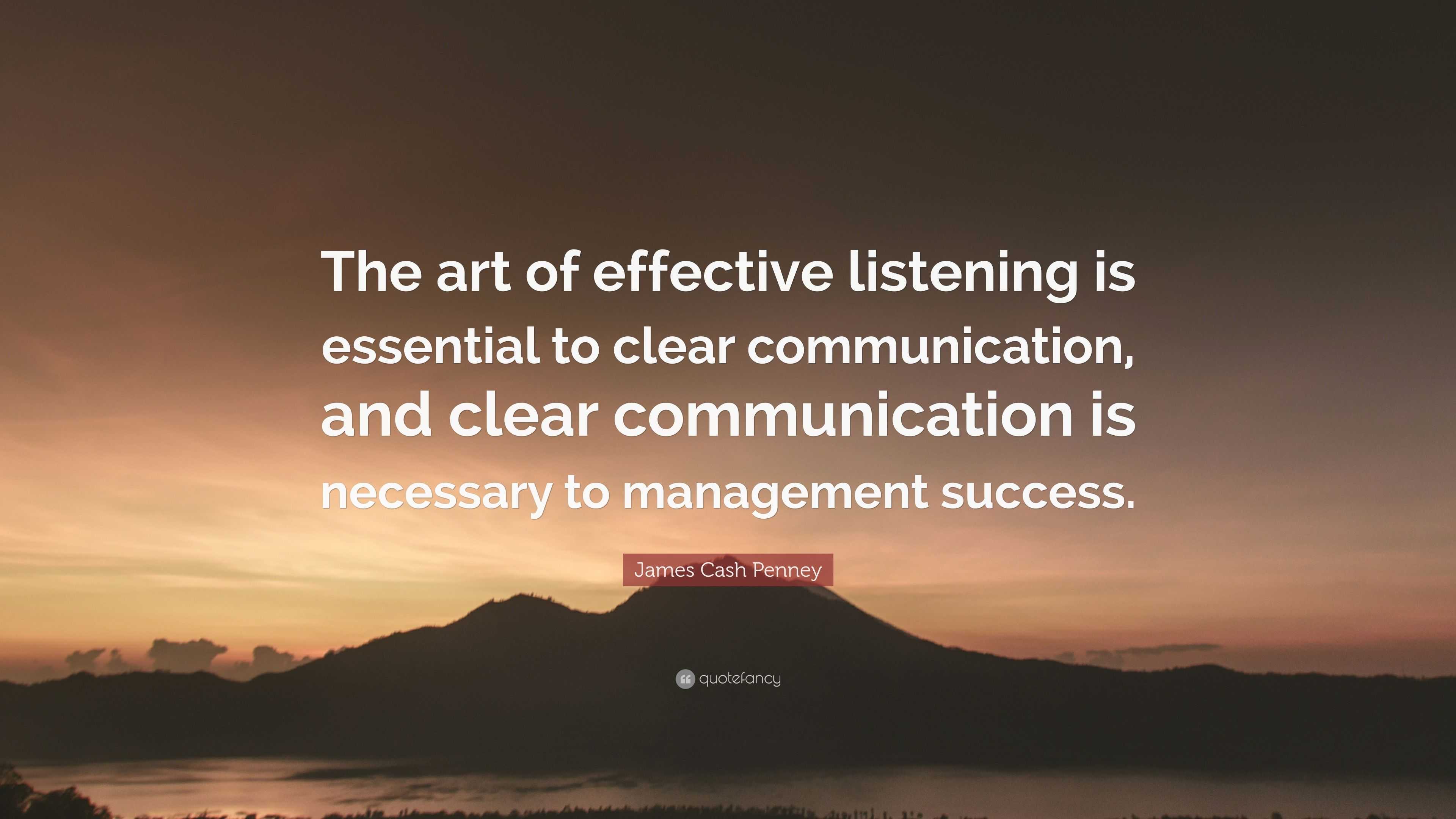Effective Briefs: Key Elements For Clear Communication

Table of Contents
Defining the Project Scope: Setting Clear Objectives and Goals
Creating effective project briefs starts with a clearly defined scope. This means setting specific, measurable, achievable, relevant, and time-bound (SMART) goals. Ambiguous goals lead to confusion, missed deadlines, and ultimately, project failure.
Clearly Defined Goals and Objectives
- Examples of SMART goals: "Increase website traffic by 20% in the next quarter," "Develop a mobile app with a 4.5-star rating on app stores within six months," "Reduce customer service response time by 15% within three months."
- Avoiding ambiguity: Use precise language, avoid jargon, and quantify your goals whenever possible. Instead of "improve website design," aim for "increase website conversion rates by 10% through A/B testing and UI/UX improvements."
- Poorly defined vs. well-defined goals: A poorly defined goal might be "make the website better." A well-defined goal would be "increase user engagement on the website by 25% within three months by implementing interactive elements and improving navigation."
Target Audience Definition
Understanding your target audience is paramount. A well-defined target audience informs every design decision, from content creation to user interface (UI) and user experience (UX) design.
- Techniques for identifying the target audience: Conduct market research, analyze existing customer data, create user personas (detailed representations of your ideal customer), and use analytics tools.
- Creating user personas: Develop detailed profiles that include demographics, psychographics, needs, pain points, and online behavior.
- Importance of UX: Consider the user journey and how your project will impact their experience. An effective brief should address user needs and expectations.
Essential Information for Effective Briefs: Details Make the Difference
Effective briefs require comprehensive detail. Omitting crucial information creates confusion and necessitates costly rework later on.
Background and Context
Providing sufficient background information is crucial for setting the stage. This context allows stakeholders to fully grasp the project's purpose and challenges.
- Types of background information: Include the project's history, previous attempts, relevant market data, and any existing constraints or challenges.
- Examples: If designing a website redesign, include details on the current site's performance, user feedback, and business objectives.
- Context improves understanding and reduces assumptions: Clear context minimizes the need for clarification and guesswork, preventing misinterpretations.
Deliverables and Milestones
Clearly define what you expect to receive at each stage of the project. This includes outlining all project deliverables and setting key milestones.
- Examples of deliverables: Website mockups, functional prototypes, finished website, marketing materials, etc.
- Creating a realistic timeline: Use project management tools like Gantt charts to visualize tasks, dependencies, and deadlines. Avoid overly ambitious timelines.
- Visual aids for clarity: Gantt charts, flowcharts, and other visual representations can significantly improve comprehension.
Budget and Timeline
Specify the allocated budget and project deadlines upfront. Realistic budgeting and scheduling are essential for managing expectations.
- Strategies for setting realistic budgets: Break down costs for each task, factor in unexpected expenses, and obtain multiple quotes.
- Methods for effective time management: Use project management software and techniques, such as timeboxing and prioritizing tasks.
- Impact of unrealistic deadlines and budget restrictions: Unrealistic deadlines often result in rushed work and compromised quality, while insufficient budgets lead to compromises in features or resources.
Communication and Collaboration: Fostering Effective Teamwork
Effective briefs facilitate seamless collaboration. Establishing clear communication channels and feedback mechanisms is vital for success.
Open Communication Channels
Designate clear communication channels to prevent misunderstandings and ensure everyone stays informed.
- Examples of effective communication channels: Project management software (Asana, Trello, Monday.com), regular meetings, email updates, instant messaging.
- Benefits of collaborative tools: These platforms improve transparency, accountability, and information sharing.
Feedback Mechanisms
Incorporate feedback loops throughout the project lifecycle. Constructive feedback helps identify issues early on and improve the final product.
- Methods for gathering feedback: Regular check-ins, surveys, feedback forms, user testing sessions.
- Creating a culture of constructive feedback: Encourage open communication and a non-judgmental environment where team members feel comfortable sharing their opinions.
- Addressing feedback promptly and effectively: Respond to feedback in a timely manner and explain how it will be addressed.
Review and Refinement: Ensuring Clarity and Accuracy
Thorough review and refinement are crucial for ensuring your brief is clear, accurate, and effective.
Proofreading and Editing
Before distribution, meticulously review the brief for any errors or ambiguities.
- Checklist for reviewing a brief: Check for clarity, completeness, accuracy, consistency, and readability.
- Tools for improving writing clarity: Use grammar and spell checkers, and consider seeking feedback from a colleague.
- Value of multiple reviewers: Having multiple people review the brief helps catch errors and ensures clarity.
Iteration and Adjustment
Be prepared to adapt and refine the brief based on feedback. This iterative process improves the final product and ensures everyone is aligned.
- Strategies for handling revisions: Use version control to track changes and maintain a clear record of revisions.
- Maintaining open communication during revisions: Communicate changes clearly and promptly to all stakeholders.
- Iterative processes improve the final product: Embracing iterative processes ensures the brief evolves to be more accurate and effective over time.
Conclusion
Mastering the art of crafting effective briefs will significantly improve your communication and project outcomes. The key takeaways are clear objectives, detailed information, open communication, and thorough review. By implementing these strategies, you can ensure your projects are well-defined, well-managed, and ultimately, successful. Start creating clearer, more effective briefs today!

Featured Posts
-
 E40m For Brobbey Analyzing Ten Hags Summer Transfer Decisions
May 23, 2025
E40m For Brobbey Analyzing Ten Hags Summer Transfer Decisions
May 23, 2025 -
 Grand Ole Opry A First Ever Uk Performance At The Royal Albert Hall
May 23, 2025
Grand Ole Opry A First Ever Uk Performance At The Royal Albert Hall
May 23, 2025 -
 Debate Heats Up Rio Tinto And Andrew Forrest On The Future Of The Pilbara
May 23, 2025
Debate Heats Up Rio Tinto And Andrew Forrest On The Future Of The Pilbara
May 23, 2025 -
 U S Penny Phase Out No More Pennies In Circulation By 2026
May 23, 2025
U S Penny Phase Out No More Pennies In Circulation By 2026
May 23, 2025 -
 Is Betting On Natural Disasters Like The La Wildfires A Reflection Of Our Times
May 23, 2025
Is Betting On Natural Disasters Like The La Wildfires A Reflection Of Our Times
May 23, 2025
Latest Posts
-
 Exclusive Sam Altman And Jony Ives Unannounced Project
May 23, 2025
Exclusive Sam Altman And Jony Ives Unannounced Project
May 23, 2025 -
 Todays Market Bond Sell Off Dow Futures Bitcoin Price Surge
May 23, 2025
Todays Market Bond Sell Off Dow Futures Bitcoin Price Surge
May 23, 2025 -
 Universals Massive Theme Park Investment Implications For The Theme Park Industry
May 23, 2025
Universals Massive Theme Park Investment Implications For The Theme Park Industry
May 23, 2025 -
 Sam Altmans Secret Device What He Told Open Ai About His Collaboration With Jony Ive
May 23, 2025
Sam Altmans Secret Device What He Told Open Ai About His Collaboration With Jony Ive
May 23, 2025 -
 Stock Market News Bonds Fall Dow Futures Fluctuate Bitcoin Climbs
May 23, 2025
Stock Market News Bonds Fall Dow Futures Fluctuate Bitcoin Climbs
May 23, 2025
